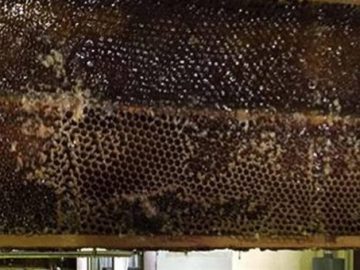One of the world’s most famous fast food chain, McDonald’s has become highly recognized brand for all generations. Even though, it’s no surprise that McDonald’s isn’t the healthiest place to eat, sometimes it just seems to be the right choice. With numerous locations all over the world, every single person have tasted a bite from the inglorious Big Mac and fries, and many children have played with the Happy Meal’s toys.
While McDonald’s reached variety of cultures, a closer investigation of its dishes has caused many individuals to rethink their food of choice. Why?
Because of these 5 ingredients that have been found in their fast food meals.
TBHQ
A petroleum-based additive, tertiary butylhydroquinone aka tert-Butylhydroquinone and TBHQ is used for persevering unsaturated vegetable oils and many edible animal fats. Also, TBHQ preserves the color (even in the presence of iron) as well as the flavor and/or odor of the things to which it is added. Besides that fact that both the European Food Safety Authority (EFSA) and the United States Food and Drug Administration (FDA) have approved this additive as safe to consume for humans, long-term use of it may cause serious damage to your health: stomach tumors and DNA damage.
And you know what?
TBHQ is found in 18 different meals on the McDonald’s menu.
Cellulose
Wood?!? In food?!? YES! And, many McDonald’s items have cellulose in them.
Cellulose is a natural product, a virgin wood pulp, that has been processed and manufactured to different uses. According to the FDA, it is deemed safe for human consumption, while USDA, United States Department of Agriculture, sets a limit of 3.5% on the use of cellulose in meat products. Cellulose is used in food as an extender that provides the structure and reduces breakage. Moreover, it adds fiber to the food, which may be good for those who do not get the daily recommended fiber intake. BUT, if you consume to much cellulose or there is a sudden increase of the amount of fiber in your diet, you may experience side effects such as diarrhea, gas, and bloating.
Silicone Oil
Are you in love with McDonald’s chicken nuggets? Yes? Then, keep in mind that you are also a regular user of silicone oil.
Food-grade silicone oil or dimethylpolysiloxane (for all the chemists out there :)) is regularly used in medical and food-prep devices. Being a synthetic material, it is used in contact lenses, lubricants, and caulking. Moreover, silicone oil prevents oxidation of fats and oils as well as it extends the shelf life of the processed nuggets.
Silicon Dioxide
Known as silica and industrial sand, Silicon Dioxide is a natural compound made of silicon and oxygen. In nature, this compound can be found in the form of quartz, water, many plants and animals, and it the earth itself. Moreover, silicon dioxide is even found in the tissues of the human body.
Being a common additive in food production, silica is used primarily as a flow agent in powered foods, or to absorb water in hygroscopic applications. It has been added to meats and sauces to keep them from clumping together. Silica’s wide use is in the manufacture of optical fibers, glass, and cement. Even though FDA approves silicone dioxide as safe, it has set upper limits on its intake: it shouldn’t exceed 2% of a food’s total weight.
Ammonium Sulfate
Being one of first and widely used in nitrogen fertilizers for crop production, ammonium sulfate, is an inorganic salt used in the whole food industry. It is crystalline solid with no aroma, and a slightly salty taste. Ammonium sulfate is commonly used as a dough conditioner, surfactant, or dough strengthener, and it supplies extra Nitrogen for the yeast to consume promoting product consistency, volume, crumb, and shelf life. As an additive, it also aids in controlling the pH of flours and baked products. This chemical is used as an ingredient in McDonald’s burger buns.
If these 5 dangerous ingredients doesn’t change your mind for eating at McDonald’s, I don’t know what would! Stay away from all fast food! You only live once, so make right choices, and always, I mean ALWAYS go with the healthiest choice for you…
Got any questions? Feel free to post them in the section below. And, if you like this article share it! It’s completely free of charge 😉
At the end I have a question for you: Are you still lovin’ it?
Reference Sources:
https://www.efsa.europa.eu/en/efsajournal/pub/4363
https://www.federalregister.gov/documents/2015/06/16/2015-14704/food-additives-permitted-for-direct-addition-to-food-for-human-consumption-tbhq
https://www.accessdata.fda.gov/scripts/cdrh/cfdocs/cfCFR/CFRSearch.cfm?fr=172.185
https://en.wikipedia.org/wiki/Silicone_oil




































Connect with us